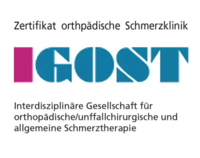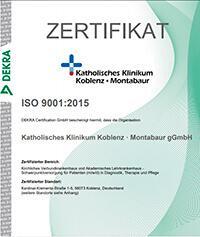Femoral Neck Fracture — Hip Replacement in Neck Fracture: treatment in the Best Hospitals in the World
Treatment prices are regulated by national law of the corresponding countries, but can also include additional hospital coefficients. In order to receive the individual cost calculation, please send us the request and medical records.

Department of Adult and Pediatric Orthopedics, Traumatology
The Department of Adult and Pediatric Orthopedics, Traumatology is part of the specialized Center for Musculoskeletal Disorders, whose medical team consists of highly qualified orthopedists, traumatologists, and spinal surgeons. The department offers modern diagnostics and treatment of the entire range of musculoskeletal diseases. The department's field of competence includes the treatment of injuries of varying severity. The therapeutic options cover both conservative measures and surgical interventions, which are mainly performed using sparing minimally invasive techniques. The treatment concept is based on the comprehensive approach – from the use of conservative methods to physiotherapeutic procedures the day after surgery.






Department of Adult and Pediatric Orthopedics, Traumatology, Foot Surgery
According to the prestigious Focus magazine, the Department of Adult and Pediatric Orthopedics, Traumatology, Foot Surgery ranks among the top German medical facilities specializing in hip surgery! The department offers the full range of high-precision diagnostics and conservative and surgical treatment for diseases of bones, joints, muscles, ligaments, and tendons. One of the department's key areas of clinical practice is large joint arthroplasty. In this area, the department is awarded the prestigious endoCert certificate. The doctors in the department's operating rooms successfully perform knee, hip, and shoulder replacement surgery. Whenever possible, preference is given to minimally invasive joint replacement surgery. An important part of the work of the department's doctors is the treatment of orthopedic diseases and musculoskeletal injuries in children. The specialists at the medical facility also have long experience in helping patients with foot pathologies and deformities, including hallux valgus, hallux rigidus, hammer toes and claw toes, metatarsalgia, etc. The department's doctors have in their arsenal state-of-the-art equipment and modern treatment methods that allow for the achievement of excellent therapeutic results. More than 3,500 inpatients and about 17,000 outpatients are treated at the medical facility every year.




Department of Orthopedics, Traumatology, Spinal Surgery and Foot Surgery
According to the Focus magazine, the Department of Orthopedics, Traumatology, Spinal Surgery and Foot Surgery ranks among the top German medical facilities in treating orthopedic diseases and spinal surgery! The department carries out comprehensive examinations and effectively treats musculoskeletal diseases and injuries. The department has about 130 beds for its patient hospitalization. Doctors annually admit more than 4,000 patients for inpatient treatment. Several thousand surgical interventions of varying complexity are performed on the basis of the medical facility annually. The department offers the services of the certified Maximum Care Joint Replacement Surgery Center (EPZmax) and the certified Trauma Center. In addition, the department's specialists have vast experience in treating spinal and foot pathologies. The main goal of the department's doctors is to restore mobility and eliminate pain. The specialists always prefer an individual approach to each patient and his clinical case.






Approximately 80% of femoral neck fractures occur due to osteoporosis. It affects elderly people, mostly women. Only surgical methods can be used for treatment. Doctors can perform both organ-preserving treatment by fixing bone fragments and joint replacement surgery. Hip replacement provides better functional outcomes. Patients recover faster and suffer less pain. They are more likely to be able to return to active life and are less likely to need constant care. You can go abroad to undergo replacement surgery. Booking Health will arrange your treatment in one of the best hospitals in the world.
Content
- Are femoral neck fractures dangerous?
- What is a femoral neck fracture?
- Types of femoral fractures
- Causes
- Treatment
- Features of replacement surgery for femoral neck fracture
- How is the surgery performed?
- Rehabilitation
- Why is it worth undergoing treatment abroad?
- Treatment in European hospitals with Booking Health
Are femoral neck fractures dangerous?
According to the WHO, osteoporosis is the fourth most important public health problem after cancer, heart disease and diabetes mellitus. It is osteoporosis that is the main cause of femoral neck fractures. This disease impairs bone mineralization. As a result, even minimal load leads to the fracture of the fragile femur.
A femoral neck fracture is a deadly disease. It leads to prolonged immobilization of the patient and the development of numerous complications. The mortality rate reaches 80% within 6 months without surgical treatment.
Due to osteoporosis, the femoral neck not only breaks, but also does not heal. Therefore, the only way out of this situation for elderly patients is replacement surgery.
Although most people with the femoral neck fracture receive surgical treatment, the mortality rate from this pathology remains high. On average, 20% of people in the world, and in developed countries – about 10% of patients die within 6 months after a fracture. Those who recover are often unable to walk on their own. Approximately 25% of patients require constant care.
Femoral neck fracture is an intracapsular fracture of the hip joint.
Femoral neck fracture is usually treated with hip replacement.
Hip replacement is the substitution of an injured hip joint with prosthesis.
Cost of hip replacement starts from €9,521. You can find other treatment prices on the Booking Health website.
The best hospitals in Europe are:
- University Hospital Rechts der Isar Munich
- University Hospital Ulm
- University Hospital of Ludwig Maximilian University of Munich
- University Hospital Frankfurt-am-Main
- Vitos Orthopedic Clinic Kassel
What is a femoral neck fracture?
This is one of the types of the proximal femoral fractures. This term means three types of injury: a fracture of the femoral neck, head, or greater trochanter (a large tubercle located near the femoral head).
According to the mechanism of development, they are of high- and low-energy. High-energy injuries are possible at any age, but they are rare. The femur is very thick and strong, therefore, it is not so easy to break it. It usually breaks as a result of severe trauma, and many other bones are affected at the same time. The most common causes are car accidents and falls from great heights.
Low-energy or stress fractures are much more common. In this case, the femur breaks due to the fact that it becomes fragile. It is affected by a minimal force. In 90% of cases, the reason is the fall. Sometimes it is not even possible to determine the moment of injury: the femur simply breaks under the influence of the person's body weight.
Types of femoral fractures
There are four degrees of severity of femoral neck fractures. The first two have a favorable prognosis – these are femoral fractures without displacement. At 3-4 degrees, femoral fractures with displacement occur. In such cases, surgical treatment is necessary already in the first 2 days after injury.
Depending on where the femur is broken, the fractures of the neck itself are divided into the following categories:
- Subcapital – near the transition of the neck to the head of the femur.
- Intermediate – in the middle of the length of the femoral neck.
- Basal – at its base.
Causes
About 90% of all femoral fractures occur over the age of 70. The risk is higher in women than in men. This is due to several factors:
- Higher prevalence of osteoporosis.
- Initial signs of osteoporosis often appear after 45 years, and in men – 20 years later.
- Women have a higher life expectancy.
For a woman over 50 years, the risk of a femoral neck fracture is about 15%, and for a man of the same age it is only 5%. Among those who have lived to the age of 90 years, 30% of people suffer femoral neck fractures.
The prevalence of osteoporosis in women over 60 years old reaches 35%, and after 70 years, 50% of women suffer from bone fragility. The femoral neck fracture is one of the most common causes of death for these patients. According to US statistics, 14% of all people with osteoporosis die from this injury.
The frequency of this disease is constantly increasing. This is due to an increase in the average life expectancy of the population, especially in developed countries. In the UK, the number of osteoporotic patients increased by more than 16%, from 1.8 million to 2.1 million in just 10 years, from 2010 to 2020. In this country, there are about 100,000 fractures of the proximal femur every year. These patients occupy 20% of all beds in the Departments of Orthopedics.
Treatment
Both conservative and surgical methods can be used for the treatment. The doctor makes a choice based on the fracture severity, the patient's age, health state, taking into account concomitant diseases.
Conservative therapy involves early activation and mobilization of the patient, skeletal traction. Such an approach does not apply to older patients with stress femoral fractures. In this case, the mortality rate reaches 80%. Even if a person manages to survive, it is highly likely that he will never walk again.
As a rule, surgery is performed. It is carried out as early as possible. The best results can be achieved if patients are operated on in the first two days after injury. If surgery is performed later, the risk of death increases.
The surgical treatment can be organ-preserving. The doctor repositions the fragments of the femur and fixes them. To avoid complications, early activation of the patient after surgery is required.
Replacement surgery involves the total removal of the joint and its replacement with an endoprosthesis. This is a more efficient operation. It provides the best rates of functional recovery.
Features of replacement surgery for femoral neck fracture
Hip replacement can be total or subtotal (partial). The best functional outcomes are provided by total hip replacement. This is a treatment option, which involves placing both femoral and pelvic components. However, the patients with low motor activity can undergo partial hip replacement. In this case, doctors implant only the femoral component, thereby preserving the patient's own acetabulum.
Only total hip replacement is used in physically active patients under the age of 60. For them, total hip replacement provides a higher quality of life, better limb mobility and less pain.
Partial hip replacement is often performed in very old patients. This option also has the following advantages:
- Lower cost of treatment.
- Reduced duration of surgery.
- Less blood loss.
- Operation is more sparing, less risky to health.
- Lower risk of endoprosthesis dislocation.
The type of fixation of the components of the endoprosthesis can be cement or cementless. With the cementless method, an artificial prosthesis is pressed into the bone, and over time it grows into it. With the cement method, the prosthesis is "glued" with cement.
Although the cementless method is generally preferred for hip replacement, the doctors often prefer cement fixation for osteoporosis and femoral neck fractures. The main advantages of this approach are:
- Less pain.
- It is possible to load the operated limb earlier.
- Less risk of periprosthetic fractures during surgery and in the early postoperative period.
- Limb function is restored faster (the most significant differences are observed 6 weeks after surgery).
How is the surgery performed?
The surgery takes place either under general or spinal anesthesia. The second option is preferred for elderly patients with osteoporosis and femoral fractures. It allows the doctors to activate the patient earlier after total joint replacement, which provides a lower risk of complications.
When performing the operation, the doctor makes a 10-12 cm skin incision. He removes the patient's own joint. With any type of replacement surgery, the damaged part of the femur is removed. An artificial endoprosthesis, which consists of a leg, a neck and a head, is implanted in its place.
With total replacement surgery, the replacement of the pelvic component of the joint is also required. It is represented by the acetabulum. The doctor drills out this area to create a base for the endoprosthesis placement. Its pelvic part consists of a cup and a liner. The liner is a spacer that sits between the head of the hip and the cup. Its presence allows to further reduce the risk of some complications, primarily dislocation of the endoprosthesis.
Upon completion of the surgical procedure, the doctor sutures the wound. Sometimes drains are left in it. They allow avoiding the formation of hematoma due to the accumulation of blood. The drains are removed after 1-2 days.
The patient receives antibiotics to prevent infectious complications. His legs are bandaged and he takes anticoagulants to reduce the risk of thromboembolic complications. Some patients need blood transfusions.
Rehabilitation
For elderly patients with osteoporosis and femoral fractures, early rehabilitation after total hip replacement is extremely important. Early activation reduces the risk of bedsores, pneumonia, and thromboembolic complications. As a result, the mortality of these patients also decreases.
The patients are taught proper coughing, deep thoracic breathing, and exercises. The patients have to get out of bed already in the first 24 hours after surgery. Orthopedic hospitals in foreign countries have special frames, mechanotherapy units and cuffs for early rehabilitation.
Whenever required, passive mobilization of the knee and hip joints is carried out. Physiotherapy involves the use of portable devices, which can be applied right at the patient's bedside. In the early rehabilitation period after total joint replacement, many people receive massage and kinesitherapy.
Early rehabilitation begins no later than 12 hours after surgery. Otherwise, the risk of complications increases. In some patients, surgery is performed under spinal rather than general anesthesia. Their activation is possible within 2-4 hours after total joint replacement.
The early recovery period lasts up to 2 weeks. It takes place in the same hospital where the patient was operated on. Then late rehabilitation begins – it lasts about 2 months. The main task is to restore the supporting ability of the limb. The patient should at least take care of himself on his own. With the best outcome, he can restore professional skills and return to a socially active life.
Full load on the operated leg is possible after 1 month in case of cement fixation, and after 2 months in case of cementless fixation of the endoprosthesis. The doctors try to shorten these periods in the patients over 60 years with osteoporosis in order to reduce the risk of complications.
Why is it worth undergoing treatment abroad?
Hip replacement surgery for femoral neck fractures can be performed in any country in the world. The cost of treatment in European hospitals is higher than in developing countries. Despite this fact, a huge number of patients prefer to receive medical care in hospitals in developed European countries, since the treatment here is safer and more effective. Joint replacement surgery abroad has the following advantages:
- Safe surgery with minimal blood loss.
- State-of-the-art equipment in hospitals.
- European orthopedic surgeons are considered one of the best in the world.
- The use of the advanced types of endoprostheses, which will serve for many years, with a high probability they will never need to be replaced.
- Most patients achieve complete restoration of limb function and pain relief.
- Low risk of complications.
- The probability of dislocation of the endoprosthesis even in total replacement is less than 1%.
- The use of an accelerated rehabilitation strategy, which not only reduces the patient's recovery period, but also reduces the risk of fatal complications.
After the operation, you can go to one of the European rehabilitation centers to undergo orthopedic rehabilitation. It will restore the patient's self-care ability. Many patients fully recover their ability to work, they can lead an active social life and return to work.
Treatment in European hospitals with Booking Health
To undergo treatment in European hospital, please use the services of Booking Health. On our website, you can see the cost of treatment in different hospitals, compare prices and book a medical program at an affordable price.
Please contact the Booking Health specialists to undergo treatment in European hospital. Here are our benefits for you:
- We will choose the best European hospital whose doctors specialize in hip replacement surgery for femoral neck fractures.
- We will help you overcome the language barrier, establish communication with your attending physician.
- We will reduce the waiting time for the medical care program and book a doctor's appointment on the most suitable dates.
- We will reduce the price. The cost of treatment in European hospitals will be decreased due to the lack of additional coefficients for foreign patients.
- We will take care of all organizational issues: documents for entering the country, transfer from the airport, hotel, interpreter, etc.
- We will prepare a medical care program and translate medical documents. You do not have to repeat previously performed diagnostic tests.
- We will provide communication with the European hospital after the completion of your medical care program.
- We will organize additional medical examinations and treatment in European hospitals, if necessary.
- We will buy medicines abroad and forward them to your native country.
- We will help you keep in touch with the European hospital after the completion of your medical care program.
Booking Health makes treatment in European hospitals easier, faster and cheaper. We will fully organize your trip, and you will only have to focus on restoring your health.
Authors: Dr. Nadezhda Ivanisova, Dr. Sergey Pashchenko

